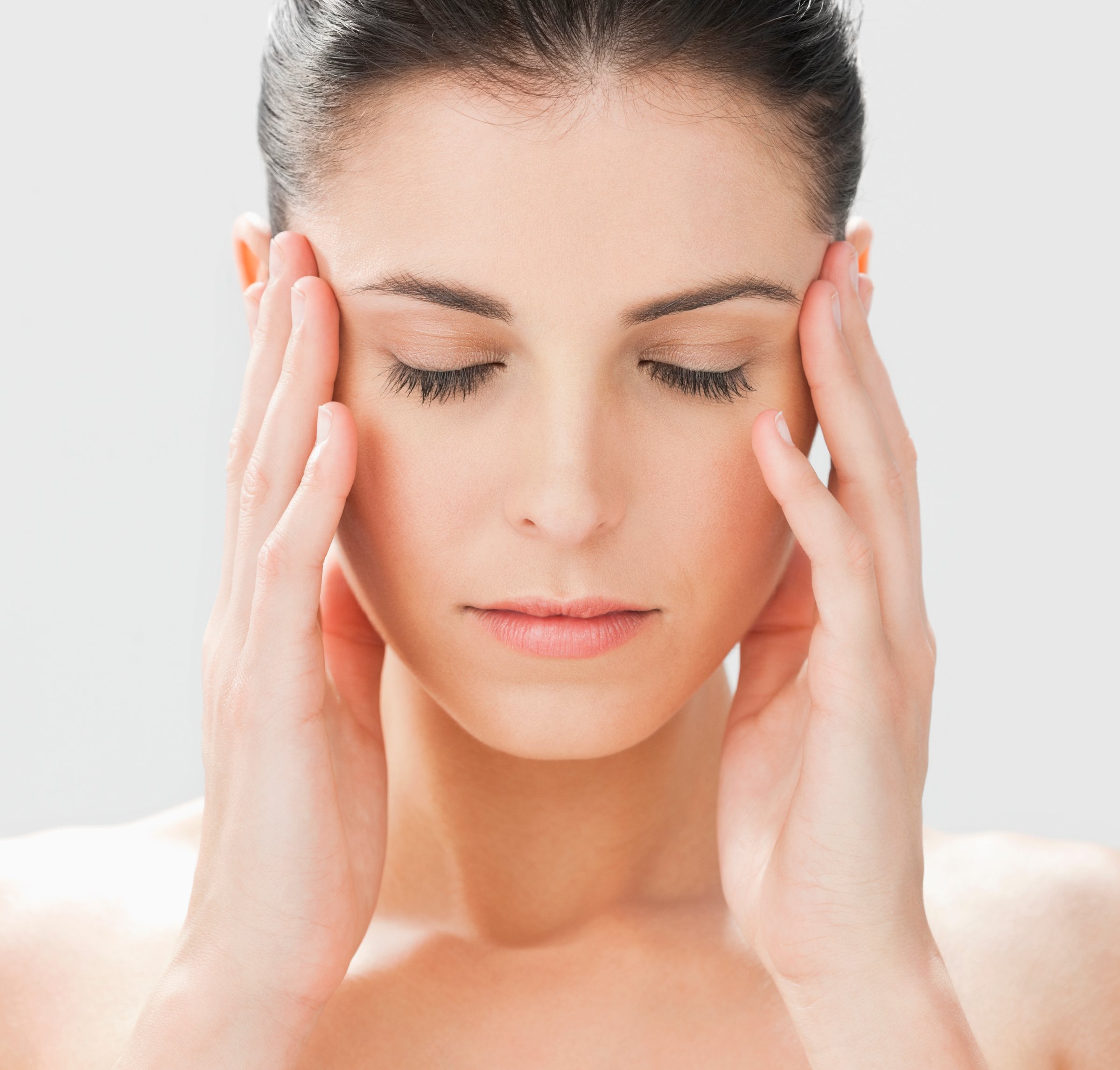
It’s no secret that migraines are a serious pain. About 37 million Americans get migraines, and women are three times more likely to have them than men, according to the National Headache Foundation. Ouch!
If you’re plagued by migraines, you’ve likely popped different pills to ease the throbbing. But would you ever try a high-tech headband or a battery-operated patch to soothe your aching head? Yes, such treatments exist. In honor of Headache and Migraine Awareness Month, here are five wacky migraine fighters explained. (The first three are available by prescription only.)
Health.com:18 Signs You’re Having a Migraine
Cefaly headband
The U.S. Food and Drug Administration recently approved the Cefaly headband, which was found to reduce patients’ number of migraine days by 30% in a clinical trial published in the journal Neurology. The headband has an electrode that presses against the middle of your forehead, delivering a round of electric impulses that work to stimulate the nerves above the eyes. It’s safe to use for 20 minutes a day, and some experts believe that daily use could help prevent migraines before they start. “In my practice, this device has helped quite a few patients, cutting headache days per month in half or more,” says Richard Lipton, M.D., Edwin S. Lowe Chair in Neurology for the Albert Einstein College of Medicine.
Transcranial magnetic stimulation (TMS)
Now that’s a mouthful! A portable device with TMS technology uses a pulse of magnetic energy to target migraines with aura, which plague about 20% of migraines sufferers, according to the National Headache Foundation. “A patient with visual aura might report seeing spots of light, zig-zag lines, or a graying of vision lasting 10 to 60 minutes,” says Dr. Lipton, who tested the treatment himself in a clinical trial for Lancet Neurology. When these visual symptoms appear, just hold the TMS device against the back of your head and press the button. A magnetic pulse will help target your occipital lobe, the brain’s center of visual processing, and help relieve aura symptoms. Just don’t go overboard with this machine: You should only use it once a day, per the FDA, which approved the treatment just last year.
Health.com:11 Surprising Headache Triggers
Zecuity patch
Most migraine sufferers are used to taking medicine, but it’s not always the best option. “Migraine sometimes paralyzes the digestive system,” Dr. Lipton says. “Once this happens, oral medications can’t be absorbed until the attack is over.” That’s where this battery-operated patch, approved by the FDA in 2013, comes in handy. For people who can’t absorb their medication properly or find it just plain nauseating, the Zecuity Patch (worn on your arm or thigh) sends the commonly prescribed migraine drug sumatriptan (brand name Imitrex) through the skin, so it bypasses your digestive system completely.
Health.com:8 Ways to Headache-Proof Your Home
Tinted glasses
For some sufferers of migraines with aura, their pain is triggered by looking at certain patterns. A 2011 study published in the journal Cephalalgia found that precision-tinted eyeglasses helped normalize brain activity for chronic migraine sufferers. All patients (some with and without headaches) were asked to look at high-contrast striped patterns through three different pairs of glasses. Those who regularly battled migraines reported feeling less discomfort when they viewed the patterns using the tinted pair. It’s thought that the visual cortex gets overstimulated during a migraine attack, leading some patients to suffer perceptual illusions, says study author Jie Huang, Ph.D. Tinted lenses help suppress that visual stress and consequently reduce migraine frequency.
Would you believe a line of glasses for migraines already exists? Axon Optics offers frames with FL-41 therapeutic lenses. They use a rose-colored filter to block the annoying blue-green light you’ll usually find in florescent lamps, so people stifled by bright spaces can get a little relief, too.
Health.com:21 Natural Headache Treatments
Acupuncture
This one’s kind of controversial. Though studies have shown that there’s not a large difference in pain reduction between placebo or “sham” acupuncture and the real thing, a study in the Canadian Medical Association Journal found 50 to 75% of patients with migraines felt better after receiving each type, respectively. Acupuncture is a practice based on traditional Chinese medicine where needles inserted into the skin are used to realign the flow of energy, or qi, in the body. Medical professionals still aren’t sure exactly how it works, but it’s possible acupuncture helps stimulate electromagnetic signals in the body to release chemicals that dull pain. Acupuncture may provide some relief to people who haven’t responded to other treatments. “When done by someone good, it’s safe and sometimes very helpful,” Dr. Lipton says.
More Must-Reads From TIME
- The 100 Most Influential People of 2024
- How Far Trump Would Go
- Why Maternity Care Is Underpaid
- Scenes From Pro-Palestinian Encampments Across U.S. Universities
- Saving Seconds Is Better Than Hours
- Why Your Breakfast Should Start with a Vegetable
- Welcome to the Golden Age of Ryan Gosling
- Want Weekly Recs on What to Watch, Read, and More? Sign Up for Worth Your Time
Contact us at letters@time.com